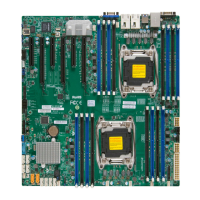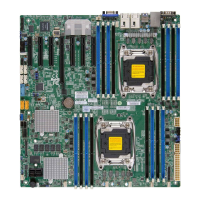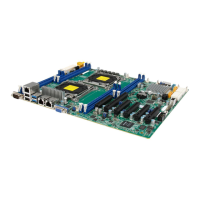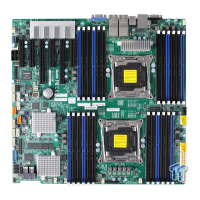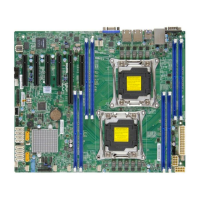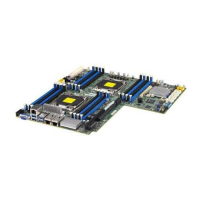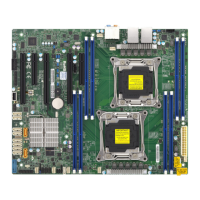Chapter 2: Installation
2-33
IPMI CODE
SAS CODE
MAC CODE
MAC CODE
M1
M2
M3
M7
M8
M9
M10
JPX1
JPL2
JPL1
JPME2
JPG1
JWD1
HDD_LED2
HDD_LED1
JTPM1
JSD2
FAN7
FAN8
FAN3
FAN6
FAN5
FAN2
FAN1
FAN4
JIPMB1
JBAT1
JBT1
JSLOT1
JKVM1
PM2
PM1
S-SATA1
S-SATA0
GUI
LEDS_OV1
X10DRS
REV:1.03
BAR CODE
BIOS
LICENSE
LAN3
JSACT1
BMC
LEDH
LEDL
SAS
CPU1 PORT2
CPU2 PORT3
SLOT1 PCI-E 3.0 X24
FLASH
BMC
BIOS
USB3(3.0)
PCH
P2-DIMMG1
P2-DIMMH1
P2-DIMME1
P2-DIMMF1
P1-DIMMD1
P1-DIMMC1
P1-DIMMB1
P1-DIMMA1
SAS MEZZANINE Header
CPU2
JLAN1
JSD1
JPB1
LAN
CTRL
PLX
SAS
Expander
(Synch)
(PCI-E
Switch)
JDBS2
JSUART1
JSSDB1
JLAN2
JPWR1
JP1
JVRM1
JVRM2
1
1
1
1
CPU1
Battery
Note: For more information on SATA HostRAID conguration, please refer
to the Intel SATA HostRAID User's Guide posted on our website @ http://
www.supermicro.com.
A. S-SATA0 (SuperDOM)
B. S-SATA1 (SuperDOM)
S-SATA 3.0 Ports
Two SATA 3.0 ports supported by the Intel SCU are
located on the motherboard. S-SATA 0/1, colored in
yellow, are used with Supermicro SuperDOM (Disk-
on-Module) devices with power-pins built in, and do
not require external power cables. SuperDOMs are
backward-compatible with regular SATA HDDs and
SATA DOMs that require external power cables. All
SATA ports provide serial-link signal connections,
which are faster than the connections of Parallel ATA.
See the table on the right for pin denitions.
2-11 SATA Connections
B
A
SATA Connectors
Pin Denitions
Pin# Signal
1 Ground
2 SATA_TXP
3 SATA_TXN
4 Ground
5 SATA_RXN
6 SATA_RXP
7 Ground

